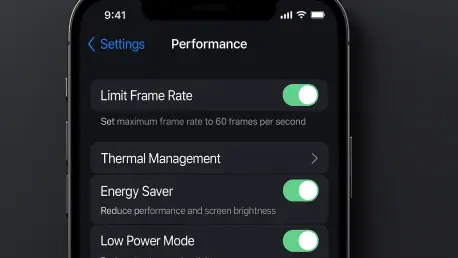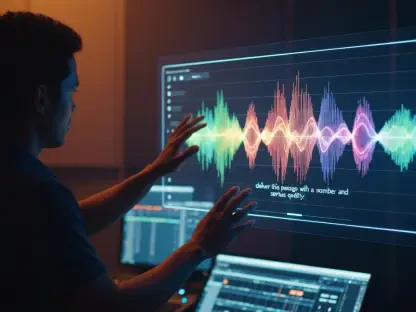With the rollout of iOS 26, Apple has once again pushed the boundaries of innovation, introducing a host of visually stunning and functionally advanced features that have captivated users worldwide. However, alongside the excitement surrounding enhancements like the liquid-glass interface and cutting-edge camera upgrades, a growing concern has emerged about the impact of these updates on device performance, particularly for those with older iPhone models. Tech experts have noted that while the latest iPhone 17 is built to handle the demanding new features, older hardware often struggles with battery drain and overheating. This has sparked a crucial conversation about balancing the allure of new technology with the practical need for efficiency. As users navigate this latest update, understanding which settings to adjust becomes essential to maintaining a seamless experience without sacrificing device longevity or daily usability.
Unpacking the Challenges of iOS 26 on Older Devices
The introduction of iOS 26 has brought a wave of aesthetic and functional improvements, but these advancements come with a hidden cost for users of older iPhones. Features like the liquid-glass appearance, while visually striking, demand significant processing power and energy, often leading to rapid battery depletion on devices not equipped with the latest hardware. Unlike the iPhone 17, which boasts enhanced battery capacity to support such features, models from previous generations frequently overheat or slow down under the strain. Tech influencers have highlighted how these cutting-edge additions, though impressive, can compromise the user experience when the underlying hardware isn’t up to par. This discrepancy has led to frustration among many who find their once-reliable devices struggling to keep up with the update’s requirements, underscoring the need for strategic adjustments to mitigate performance issues.
Beyond the immediate impact on battery life, the broader implications of running iOS 26 on older hardware reveal a deeper challenge in maintaining overall device functionality. Constant background processes tied to new features can cause sluggishness, delayed responses, and even unexpected shutdowns in extreme cases. For users who rely on their iPhones for daily tasks, this degradation in performance isn’t just an inconvenience—it’s a significant disruption. The update’s ambitious design appears tailored for the newest models, leaving owners of older devices to grapple with trade-offs between enjoying modern features and preserving basic usability. Apple has acknowledged this gap, suggesting that some settings can be toggled to reduce strain, but the onus falls on users to identify and implement these changes. This situation emphasizes the importance of customizing the iOS experience to align with the specific capabilities of each device.
Key Settings to Disable for Optimal Performance
Among the myriad settings introduced or updated in iOS 26, several stand out as particularly taxing on battery life and performance, especially for older iPhones. Clean Energy Charging, for instance, has been flagged by experts as more of a data-tracking mechanism than a genuine battery-saving tool, often leading to unnecessary power management quirks that frustrate users. Similarly, Optimized Battery Charging, designed to slow charging during peak times, can inadvertently extend charging durations without delivering noticeable benefits. Disabling these options allows for a more straightforward and efficient power management approach. Additionally, Adaptive Power Mode, which throttles performance to conserve energy, often results in a noticeably slower device, making it another setting worth turning off for those prioritizing speed over marginal battery savings.
Another set of features draining resources includes Background App Refresh and Autoplay Video Previews, both of which keep applications active even when not in use, consuming power and data in the process. Turning off these settings can significantly reduce unnecessary activity, freeing up system resources for more critical tasks. For photography enthusiasts, disabling Prioritize Faster Shooting shifts the focus to image quality over speed, a worthwhile trade-off for better results. Additionally, taking a moment to Review Subscriptions can help eliminate unused plans that may indirectly burden the device through associated app updates or notifications. These adjustments, though seemingly minor, collectively contribute to a smoother and more efficient user experience, particularly on hardware not optimized for the latest update’s demands.
Striking a Balance with New Features
While iOS 26 offers an array of innovative tools and customizations, users must weigh the benefits of these features against their practical impact on device health. The liquid-glass interface, for instance, transforms the visual experience but can be a major power hog on older models, prompting many to consider whether the aesthetic upgrade justifies the performance cost. Camera enhancements also push hardware to its limits, often leading to overheating during extended use. For those with the iPhone 17, these features run seamlessly thanks to improved hardware, but for others, a more conservative approach to enabling such options might be necessary. Striking this balance involves a careful evaluation of which enhancements truly add value to daily use versus those that merely serve as flashy additions with diminishing returns.
Ultimately, the key to navigating iOS 26 lies in personalization, ensuring that the device settings align with individual needs and hardware capabilities. Users are encouraged to experiment with toggling various features to observe their impact on performance and battery life, creating a tailored setup that maximizes efficiency. Beyond immediate adjustments, staying informed about future updates or patches from Apple that might address some of these performance concerns is advisable. The disparity between older and newer iPhone models highlights a broader trend in technology where cutting-edge updates often outpace legacy hardware, urging users to adapt proactively. By taking control of these settings, a more sustainable and satisfying interaction with iOS 26 becomes achievable, preserving both the device’s functionality and the excitement of exploring new digital frontiers.
Final Thoughts on Tailoring Your iOS Experience
Reflecting on the rollout of iOS 26, it becomes evident that while Apple delivered groundbreaking features, the update also posed challenges for users with older devices, prompting a wave of expert advice on optimization. The focus shifted toward disabling specific settings like Clean Energy Charging and Background App Refresh to curb battery drain and maintain performance. Moving forward, users are advised to regularly assess their device settings, ensuring alignment with both personal usage patterns and hardware limits. Exploring Apple’s support resources for additional tips or awaiting potential software patches that address performance hiccups is also recommended. This proactive stance not only helps mitigate the immediate drawbacks of the update but also sets a precedent for approaching future iOS releases with a critical eye, ensuring that innovation and practicality can coexist harmoniously on any device.









